The University of California, San Francisco (UCSF) maintains a collection of 400 health-themed woodblock prints from 19th-century Japan. The collection -- which includes drug advertisements, illustrated instructions for treating and preventing contagious diseases, and visual guides to the human body -- offers a unique look at Japanese medical knowledge in the late Edo and early Meiji periods. Here are a few images from the collection.

Ad for Kinder-Puwder, King of Pediatric Drugs -- Morikawa Chikashige, 1880 [+]
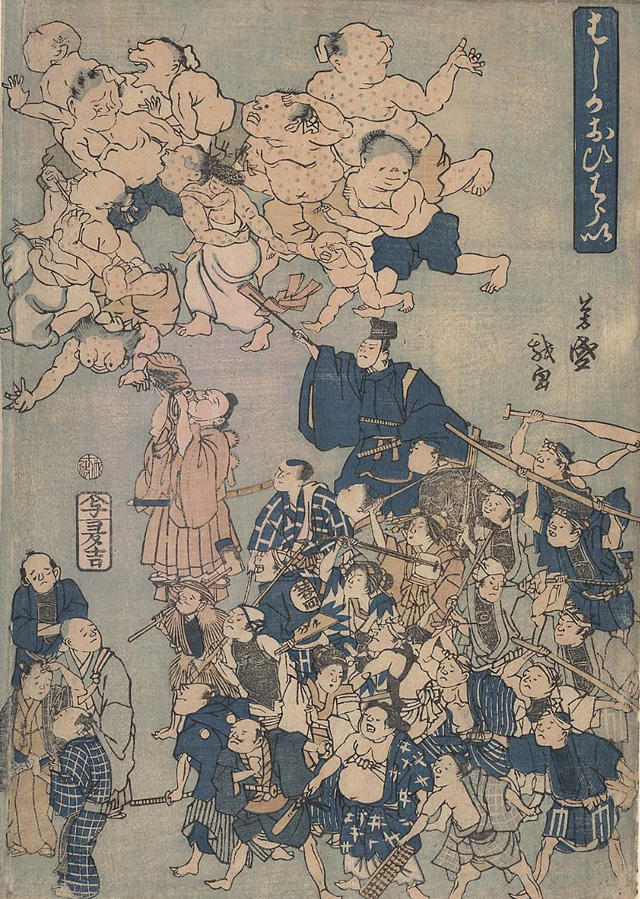
Chasing measles away -- Utagawa Yoshimori, 1862
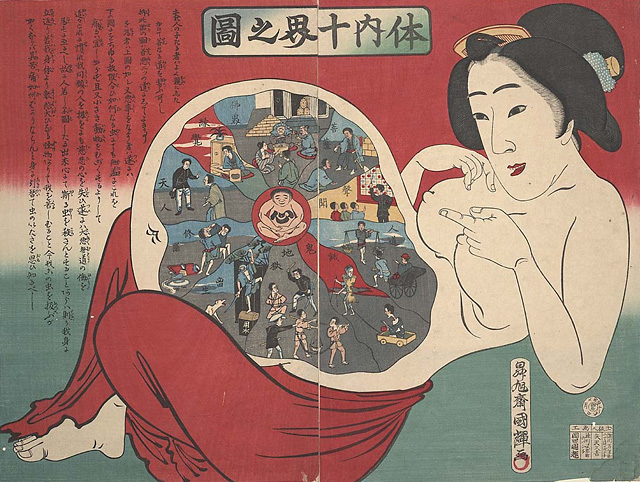
Ten realms within the body -- Utagawa Kuniteru III, c. 1885 [+]
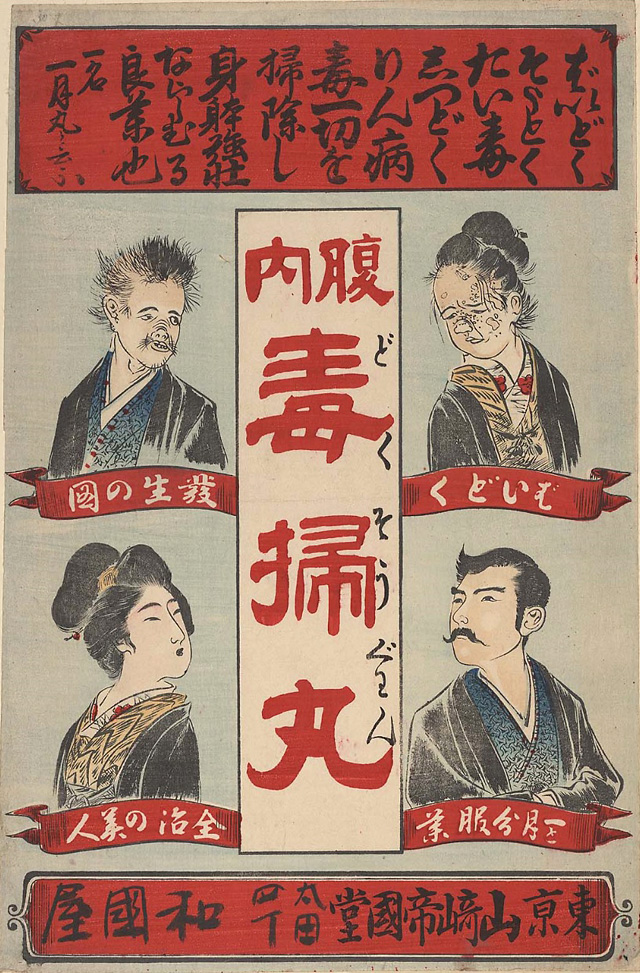
Pills to cure toxic illnesses such as syphilis and gonorrhea -- Artist unknown, late 19th century

Protective gods help good drugs fight evil disease -- Utagawa Yoshikazu, 1858 [+]

Hōsō-e talisman print to ward off smallpox -- Artist unknown, c. 1849
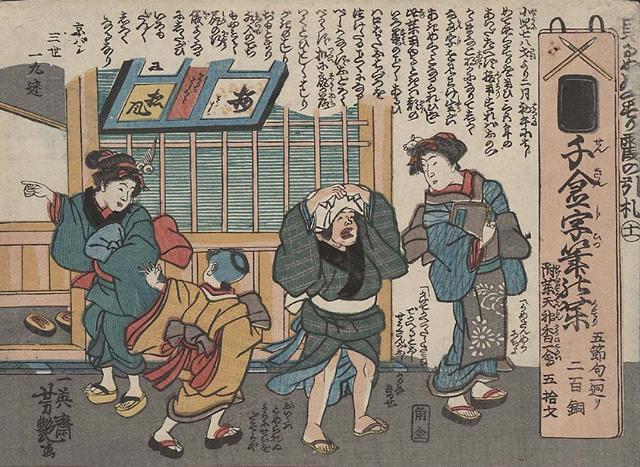
Ad for drug to improve handwriting and reading skills -- Utagawa Yoshitsuya, 1862
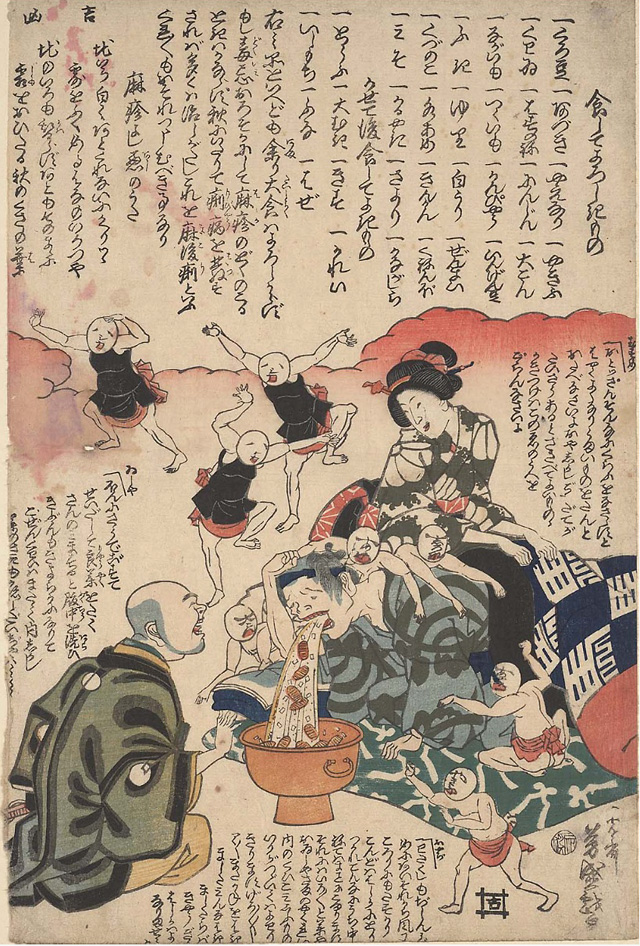
Foods that can be eaten by measles patients -- Utagawa Yoshimori, 1860s
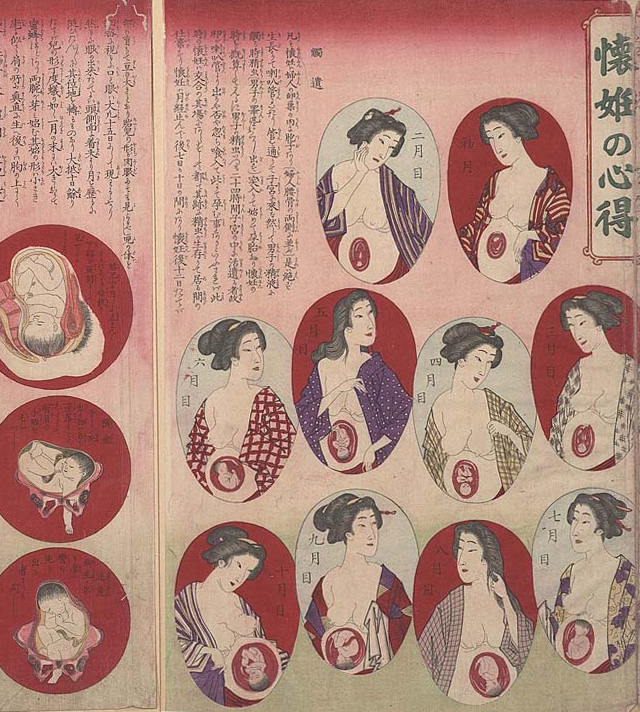
Pregnancy guide -- Hamano Teisuke, 1880 [+]
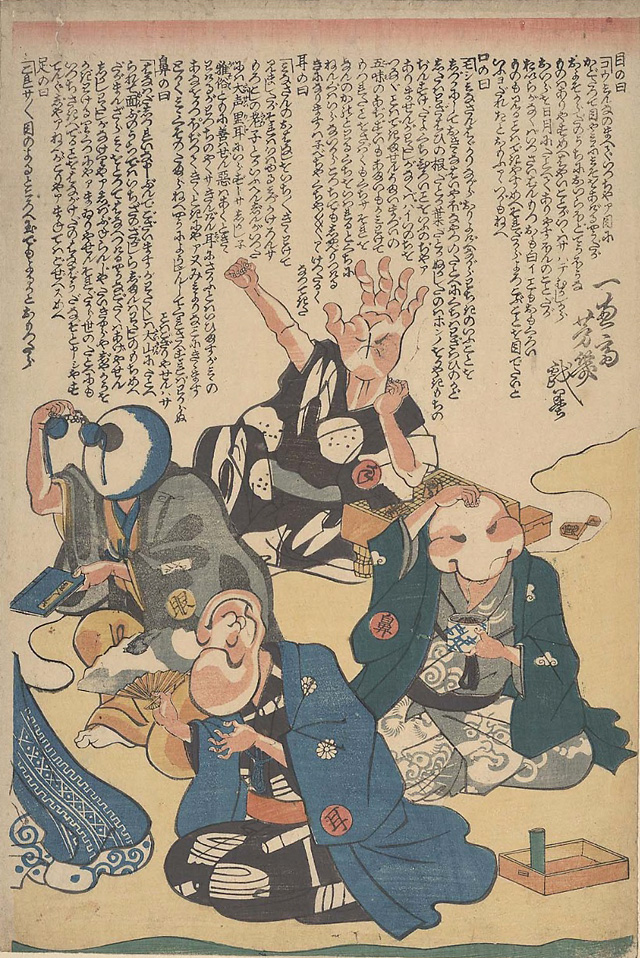
Eye, ear, nose and hand -- Ochiai Yoshiiku, c. 1865
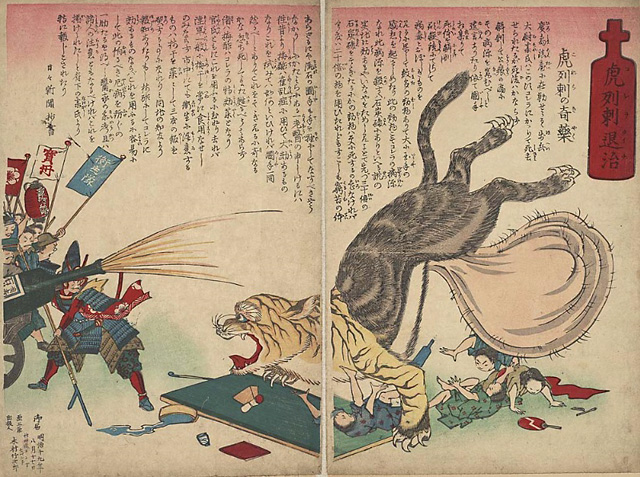
Defeating cholera -- Kimura Takejiro, 1886 [+]
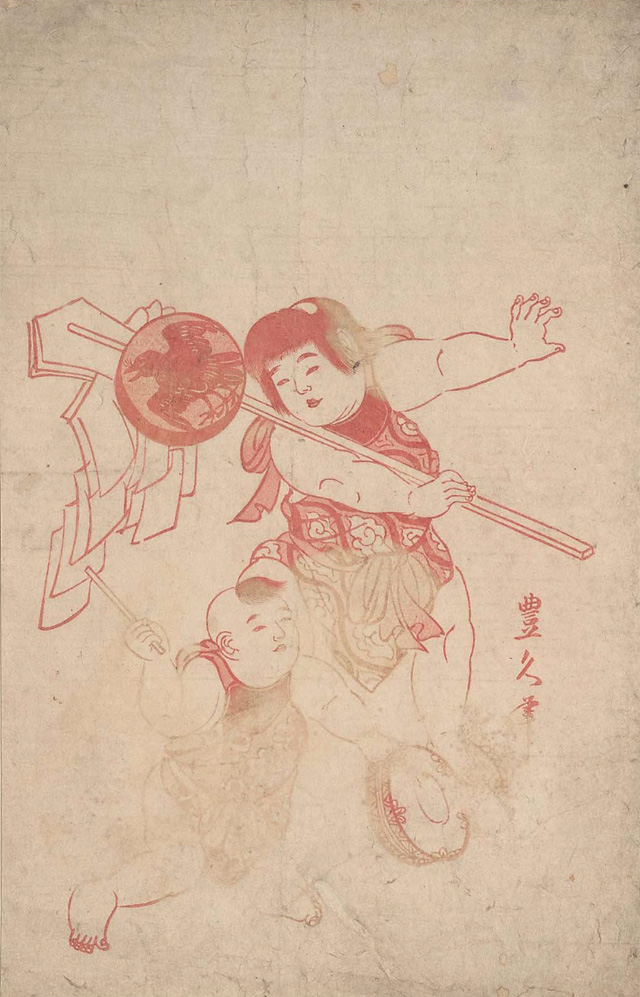
Hōsō-e talisman print to ward off smallpox -- Utagawa Toyohisa II, c. 1830
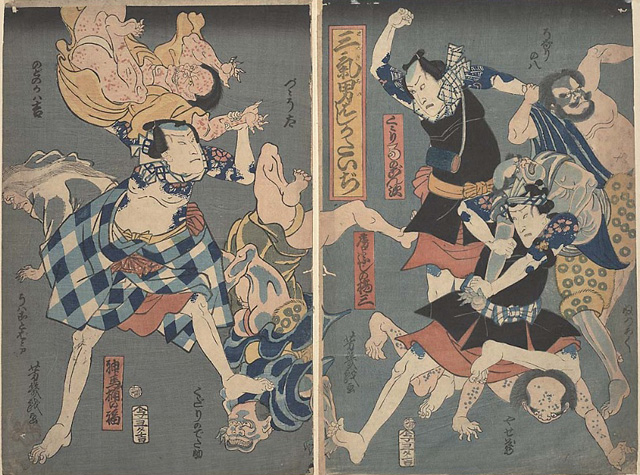
Three mighty men conquering measles -- Ochiai Yoshiiku, 1870s [+]
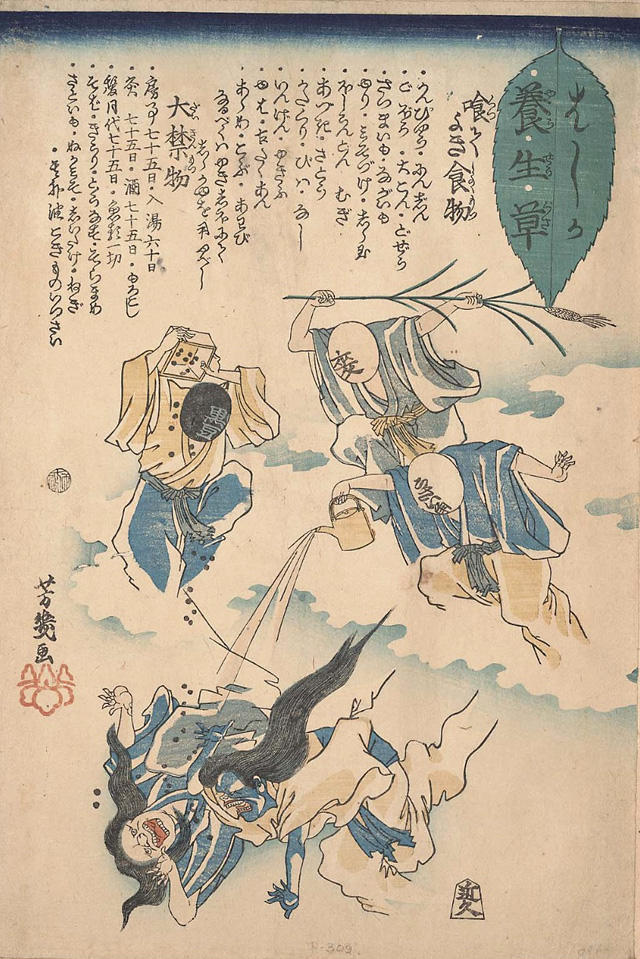
Measles treatment -- Ochiai Yoshiiku, 1862
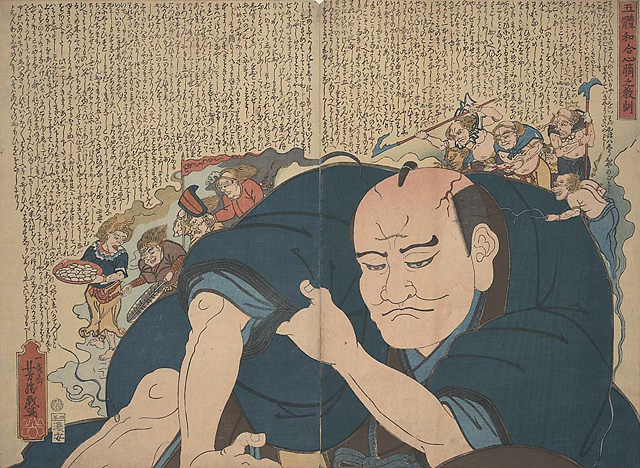
Teaching on harmonious body and mind -- Utagawa Yoshikatsu, 1850 [+]
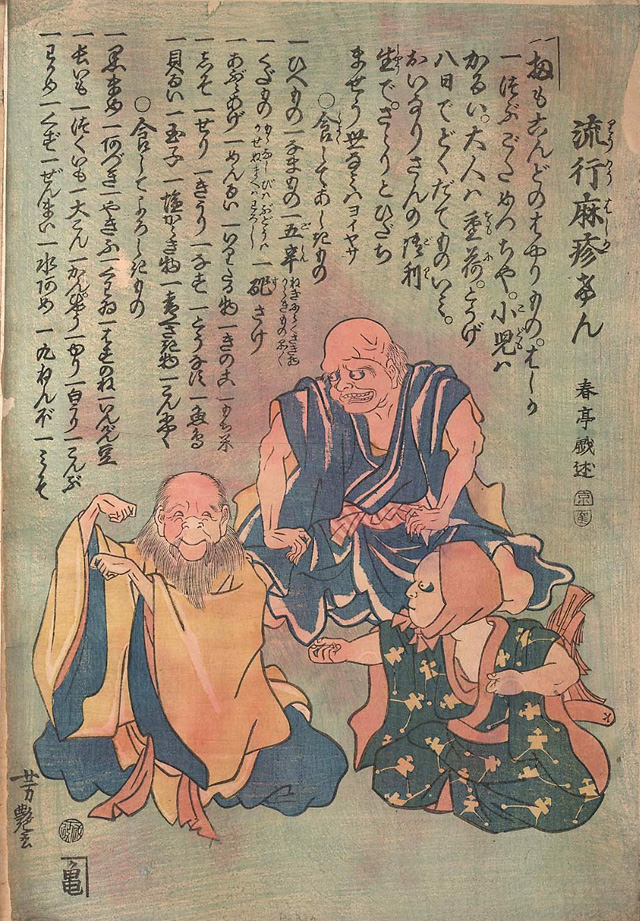
Measles-themed hand game -- Utagawa Yoshitsuya, 1862

Illustrated guide to parental obligations -- Utagawa Yoshitora, 1880 [+]

Shinto god from Izumo province for preventing measles -- Taiso Yoshitoshi, 1862
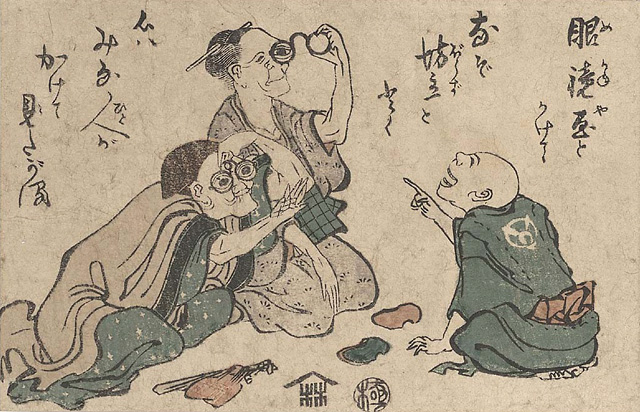
Seller of eyeglasses -- Katsushika Hokusai, c. 1811-1814
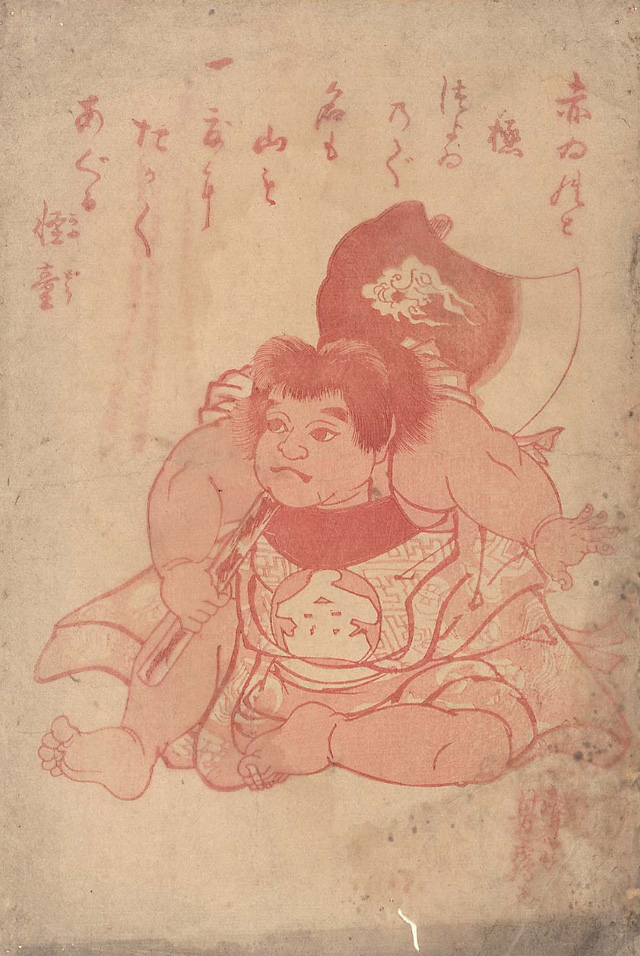
Hōsō-e talisman print to ward off smallpox -- Utagawa Yoshitsuru, c. 1849

Illustrated account of cholera prevention -- Taiso Yoshitoshi, 1877 [+]

Bodily functions personified as popular kabuki actors -- Artist unknown, late 19th century [+]
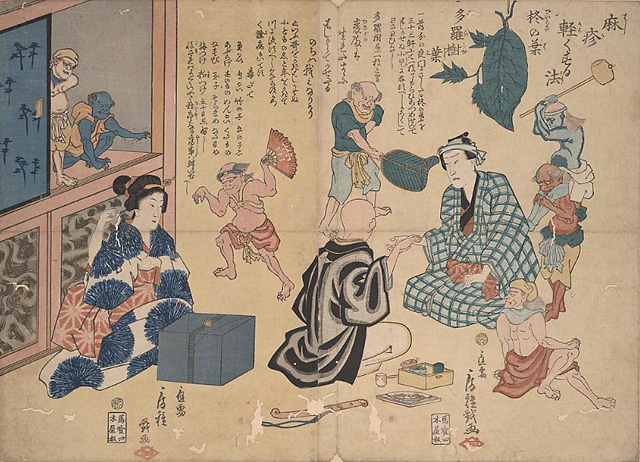
Methods for preventing measles -- Utagawa Fusatane, 1858 [+]

Defeating measles (personified as a child) -- Utagawa Yoshifuji, c. 1840
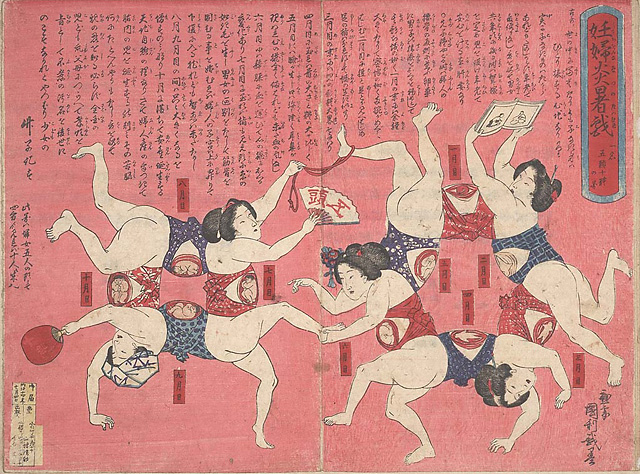
Pregnant women playing in summer heat (5 heads, 10 bodies) -- Utagawa Kunitoshi, 1881 [+]

sarah
"puwder" seems to be a mixture of the words "powder" and "puder" (which actually is the german word for powder). Kinderpuder is a product used on babys butts to keep them dry in their pampers and prevent soreness.
[]anna maria lopez lopez
What an original collection of medical prints! Are simply amazing! Thanks for sharing!
anna
[]Louise
A picture really can say a thousand words. I loved this. THanks for putting it up for all of us to see.
[]Edward
Would somebody have any idea what is going on with the pregnant women in the final image?
I am referring to the "5 Heads 10 Bodies" print. I have an old bronze statue of mysterious asian origin that is quite similar in form and I've been looking for any information on it. Feel free to check it out here: http://i54.tinypic.com/14kw5qg.jpg
I'd love to know what is going on with this "siamese twin body" thing.
[]Susanne
Great pictures. Thanks for sharing!
[]fission2
@ Edward
Although this is unconfirmed, I have suspicions that the significance of the conjoined forms is a reference to the swastika, which is widely used in Buddhism, and may have been an influence considering that the swastika symbolizes goodness and wellbeing.
[]Edward
@ fission2
Thanks. That's pretty much what I thought.
[]